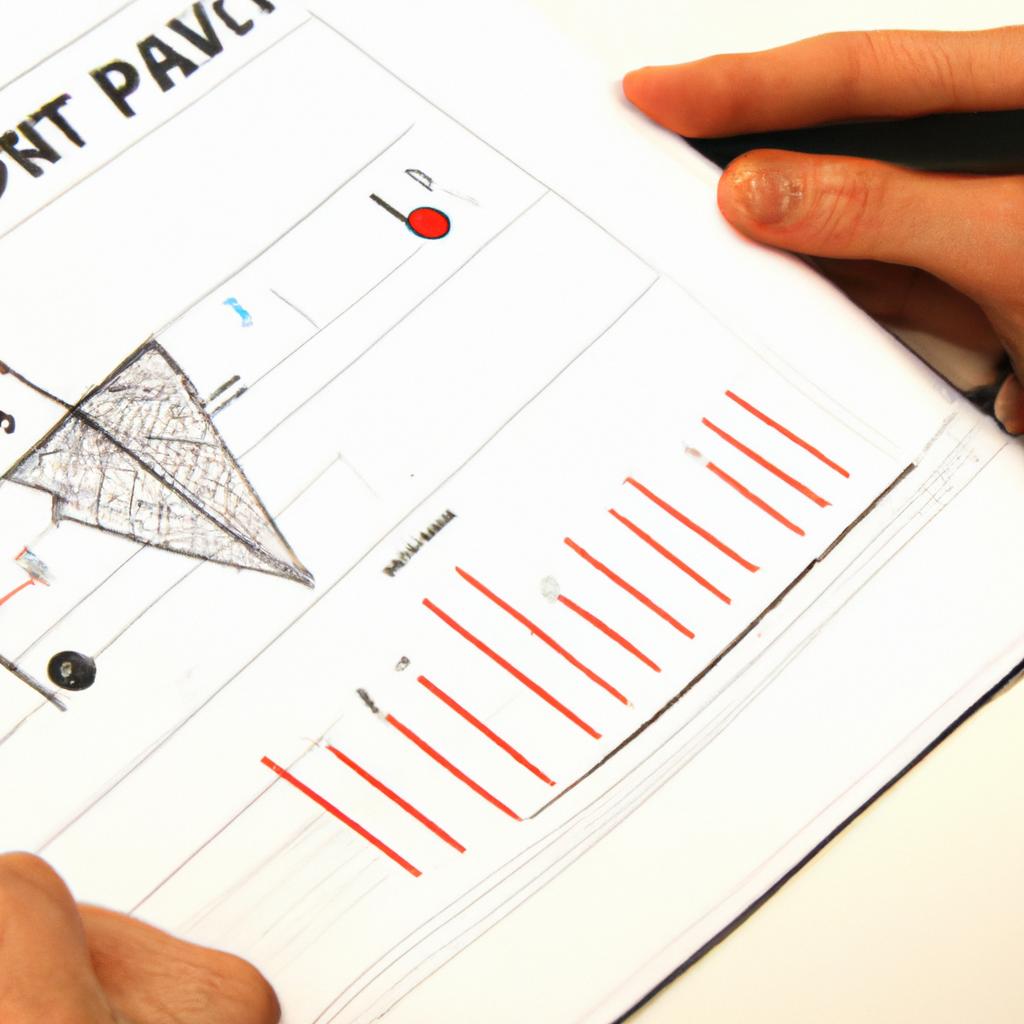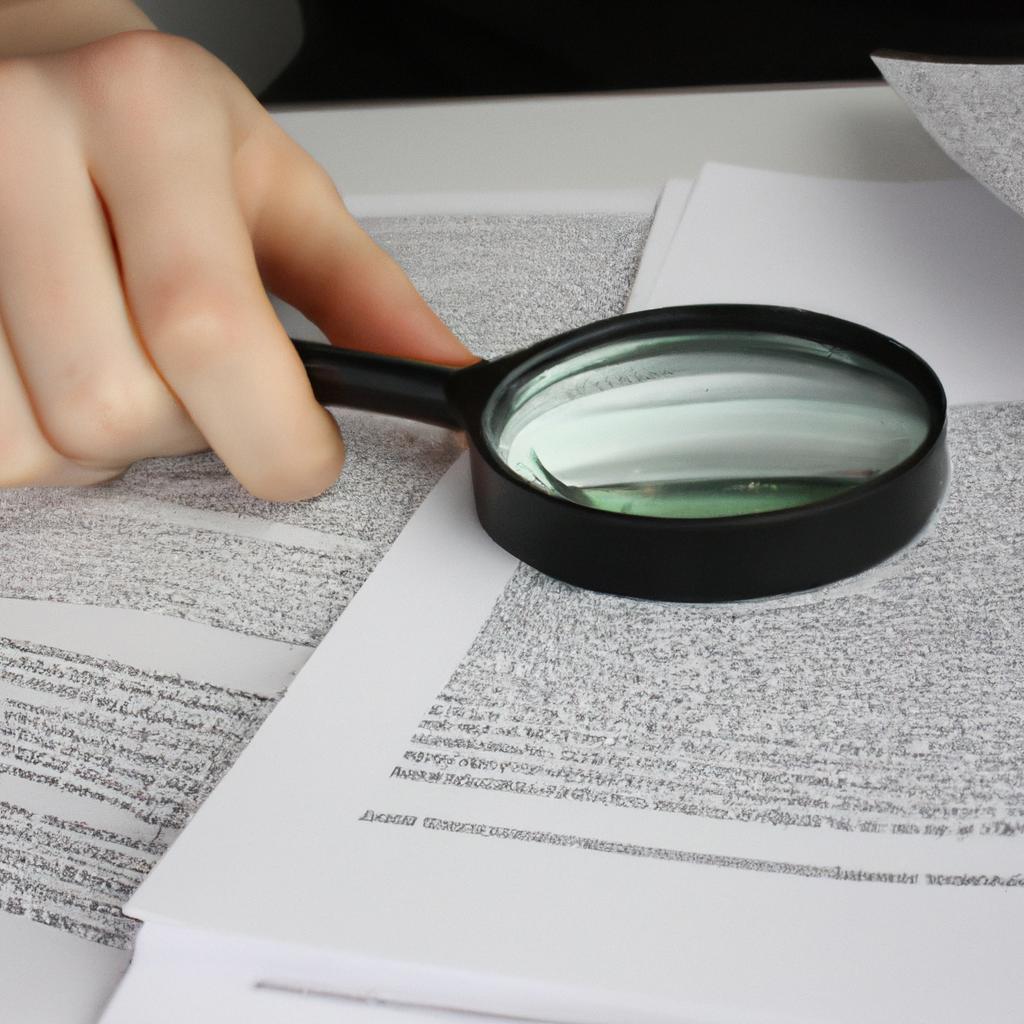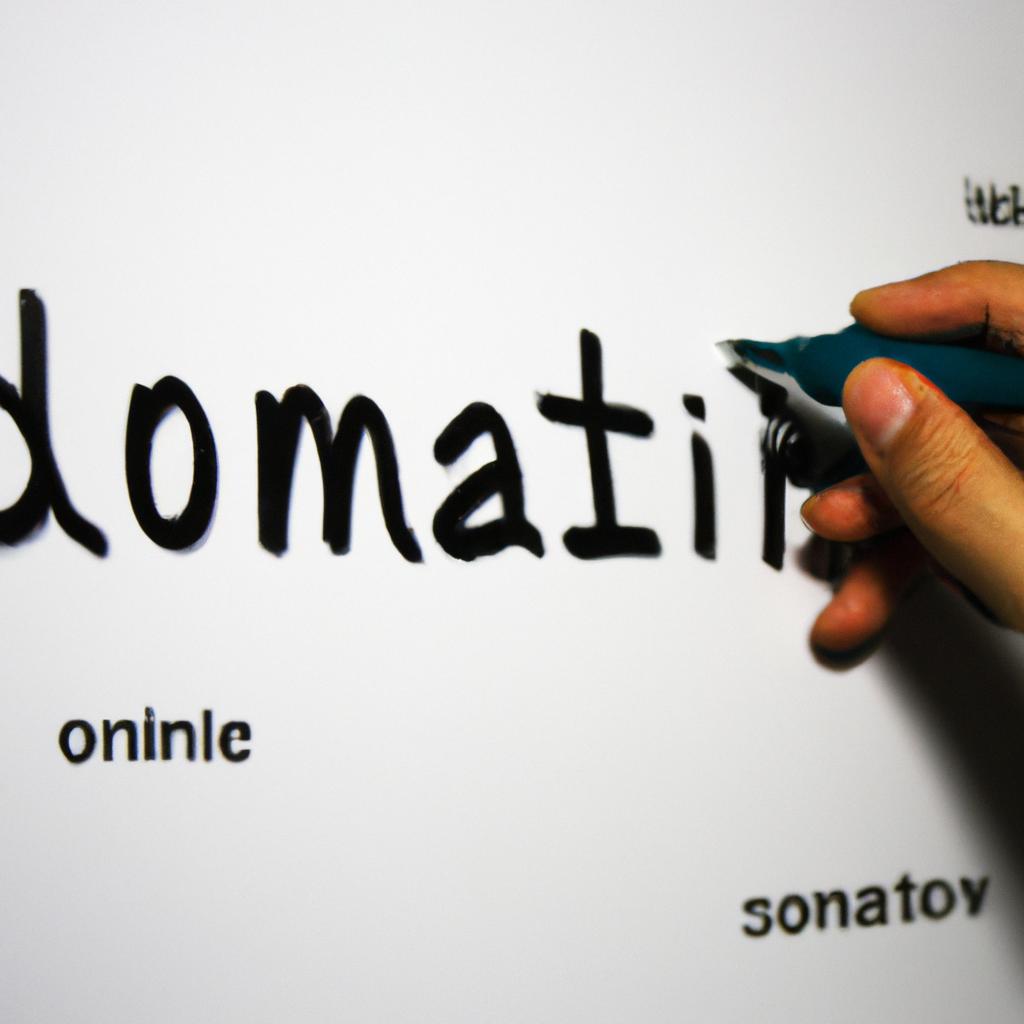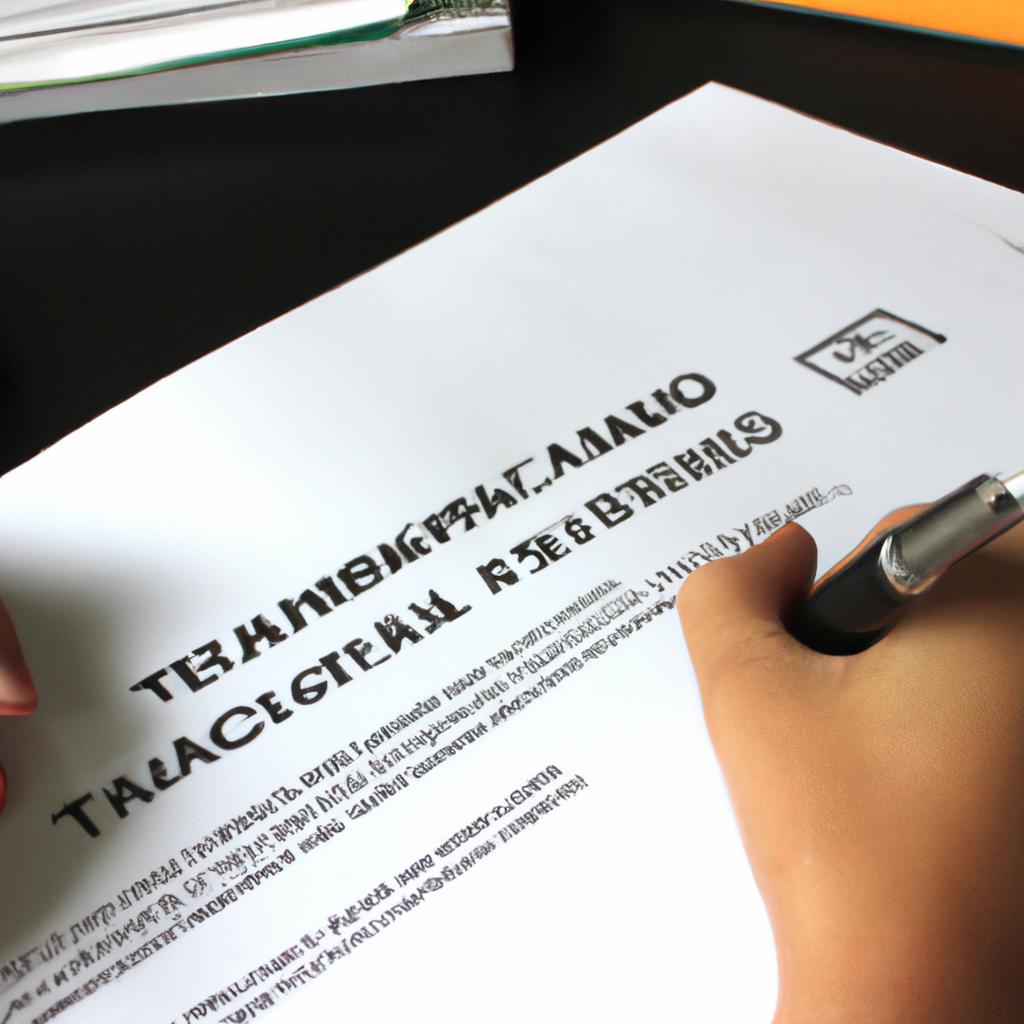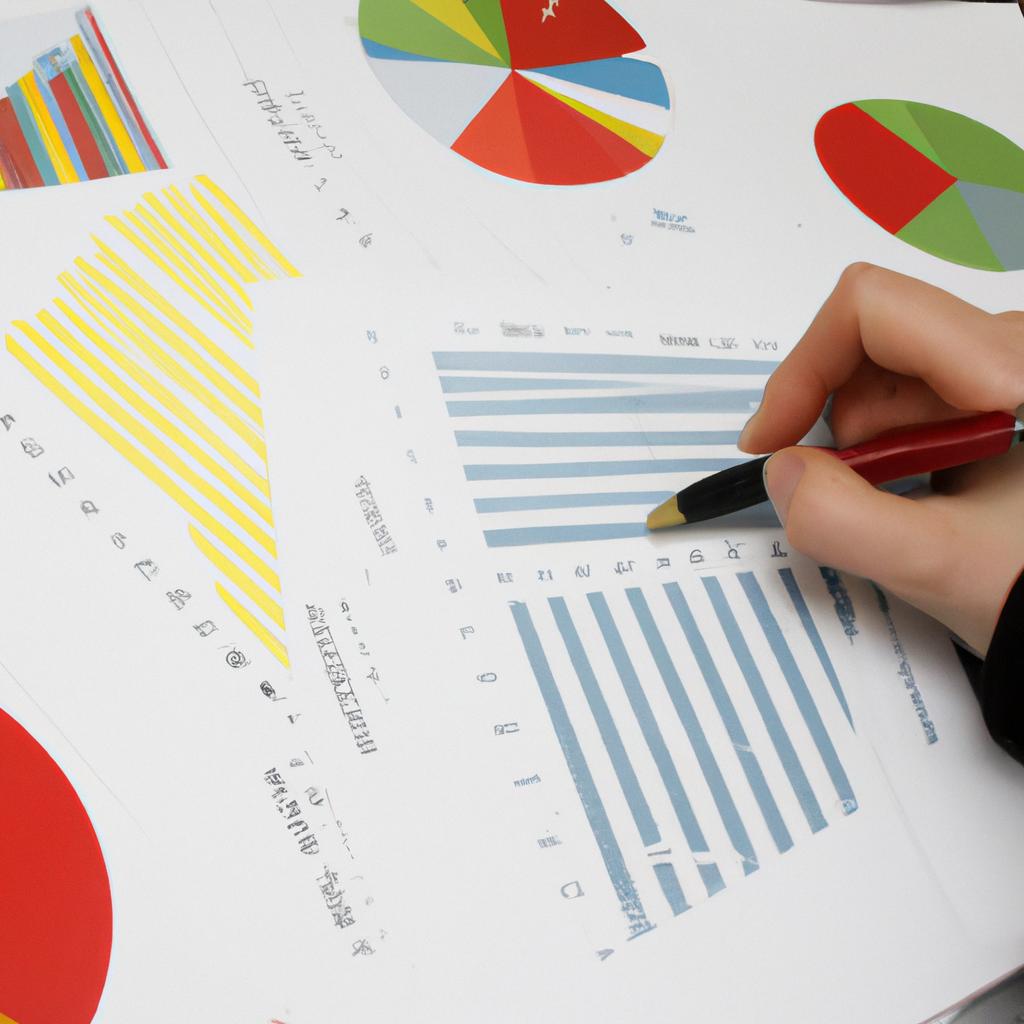Copyright Valuation in Business Appraisal: Intellectual Property Valuation Essentials

The valuation of intellectual property, particularly copyrights, is a crucial aspect of business appraisal. Copyrights are exclusive rights granted to creators for their original works such as literary, artistic, and musical creations. Valuing these intangible assets accurately is essential for various purposes including mergers and acquisitions, licensing agreements, litigation support, and financial reporting. For instance, consider the case study of XYZ Publishing Company that has built a substantial library of copyrighted books over the years. Determining the value of these copyrights not only impacts the company’s balance sheet but also influences its strategic decisions.
In today’s highly competitive business environment, copyright valuation plays a pivotal role in determining an organization’s overall worth and potential revenue streams. However, it is important to note that valuing copyrights can be complex due to several factors such as changing market conditions, advancements in technology, and evolving legal frameworks surrounding intellectual property rights. This article aims to provide an overview of copyright valuation essentials within the context of business appraisal by exploring key methodologies commonly used in practice. By understanding these fundamental concepts and techniques, professionals involved in business appraisals can make informed decisions regarding copyright asset management and maximize their value within their respective organizations.
Overview of Copyright Valuation
Valuing intellectual property, particularly copyright assets, is a complex yet crucial process in business appraisal. Copyright valuation involves determining the monetary worth of intangible rights associated with creative works such as books, music, software, and artistic designs. To understand its significance, let us consider an example: Imagine a publishing company that holds the copyrights to several best-selling novels. The value of these copyrights directly affects their financial standing and potential for growth.
The valuation of copyright assets encompasses various factors that contribute to their overall worth. These factors can be broadly classified into four categories:
-
Market Demand: The demand for copyrighted works plays a significant role in determining their value. Popularity among consumers, market trends, and the potential for future sales all influence the perceived worth of a copyright asset.
-
Exclusivity: The level of exclusivity granted by copyright protection significantly impacts its valuation. Higher levels of protection provide stronger legal barriers against infringement and unauthorized use, thereby increasing the value of the copyright asset.
-
Time Remaining on Copyright Protection: The remaining duration of copyright protection is another critical factor affecting valuation. As the expiration date approaches, the value may decrease due to reduced income-generating potential beyond that point.
-
Quality and Relevance: The quality and relevance of the copyrighted work also affect its valuation. Factors such as originality, uniqueness, artistic or technical merit, reputation, and historical significance are taken into account while assessing the value attributed to a specific copyright asset.
To further illustrate these factors visually:
| Factors Affecting Copyright Valuation |
|---|
| Market Demand |
| Quality |
By considering these four key aspects during a comprehensive evaluation process, appraisers can arrive at an objective assessment of the economic worth associated with a particular copyright asset.
Transitioning seamlessly from the overview of copyright valuation, we will now delve into an exploration of the various factors that significantly impact the process. Understanding these factors is crucial to conduct accurate and reliable copyright valuations.
Note: The subsequent section will explore Factors Affecting Copyright Valuation.
Factors Affecting Copyright Valuation
Section H2: Factors Affecting Copyright Valuation
In the previous section, we explored an overview of copyright valuation and its importance in business appraisal. Now, let us delve deeper into the factors that can significantly influence the value of a copyright.
To better understand these factors, consider a hypothetical case study involving a popular music streaming platform. The copyright for their exclusive playlist curation algorithm is being valued. This algorithm contributes to the success and differentiation of the platform from competitors, making it a valuable intellectual property asset.
Several key elements impact the valuation of copyrights:
- Market Demand: The demand for copyrighted works plays a crucial role in determining their value. In our case study, if there is high demand for personalized playlists among users, the market potential for this copyrighted algorithm increases, resulting in higher valuation.
- Profitability: The financial performance associated with a copyrighted work affects its value. If implementing this algorithm has led to increased revenue streams or cost savings for the streaming platform, it would positively impact the copyright’s valuation.
- Competitive Landscape: Understanding how similar copyrights are valued within the industry provides context for assessing worth. If competing platforms have successfully monetized similar algorithms or proprietary technology, it may indicate favorable market conditions and influence the valuation process.
- Legal Protection: Strong legal protection through patents or trademarks can enhance a copyright’s value by safeguarding against infringement and ensuring exclusivity. Robust intellectual property rights contribute to long-term profitability and increase investor confidence.
These factors interact dynamically during the copyright valuation process, requiring careful analysis and consideration. To further illustrate their interplay, refer to Table 1 below:
Table 1: Factors Influencing Copyright Valuation
| Factor | Description |
|---|---|
| Market Demand | Level of consumer interest and desire for copyrighted works |
| Profitability | Financial gains attributed to owning or utilizing specific copyrighted works |
| Competitive Landscape | Analysis of how similar copyrights are valued within the industry, including market trends and competition |
| Legal Protection | The extent to which a copyright is legally protected through patents or trademarks, ensuring exclusivity and mitigating infringement risks |
In conclusion, valuing copyrights requires an understanding of various factors that can affect their worth. By considering market demand, profitability, competitive landscape, and legal protection, appraisers can provide accurate assessments that reflect the true value of intellectual property assets. In the subsequent section on “Methods for Copyright Valuation,” we will explore different approaches used in determining the monetary value associated with copyrights.
Section H2: Methods for Copyright Valuation
Methods for Copyright Valuation
In the previous section, we explored the importance of copyright valuation in business appraisal. Now, let’s delve into the various factors that can influence the valuation of copyrights.
To illustrate these factors, consider a hypothetical scenario involving a music publishing company. The company owns the rights to several hit songs from popular artists and is seeking to determine the value of its copyrighted material for potential sale or licensing agreements.
-
Popularity and Market Demand: One key factor in valuing copyrights is the popularity and market demand for the creative work in question. In our example, if the songs owned by the music publishing company have consistently topped charts and generated significant revenue through sales and streaming platforms, their copyright value would likely be higher compared to lesser-known tracks.
-
Duration and Exclusivity: Another important consideration is the duration and exclusivity of copyright protection. Copyrights typically last for a specific period, granting exclusive rights to reproduce, distribute, perform, or display the protected work. Longer durations may positively impact valuation as they provide more time for monetization opportunities.
-
Potential Future Earnings: Valuation also takes into account potential future earnings derived from copyrighted works. Factors such as anticipated royalties from licensing deals with films, advertisements, or other commercial uses contribute to determining copyright value.
-
Legal Protection: The level of legal protection surrounding copyrights greatly influences their value. Stronger enforcement mechanisms against infringement increase perceived security for buyers or licensees, potentially driving up valuation.
These factors interact dynamically when appraising copyrights’ worthiness accurately; hence it requires specialized knowledge and expertise within intellectual property (IP) valuation practices. To further explore this topic comprehensively, we will now examine different methods commonly used in copyright valuation.
[table]
| Method | Description | Applicability |
|---|---|---|
| Income Approach | Based on projected future cash flows derived from copyright, considering revenue streams like licensing or sales. | Valuing copyrights with proven earnings |
| Market Approach | Comparing the sale prices of similar copyrighted works in the marketplace to determine fair market value. | Appropriate for commercially active IP |
| Cost Approach | Evaluating the cost incurred to recreate a similar work and adjusting it based on factors such as age and quality. | Useful when no comparable transactions |
| Relief-from-Royalty Method | Assessing the hypothetical royalty payment that would be required if one were to license the copyrighted work. | Suitable for valuing internal use rights |
[/table]
These methods provide evaluators with valuable tools to assess different aspects of copyright valuation, ensuring a comprehensive analysis is undertaken.
In determining the value of copyrights, legal considerations play an essential role. Understanding how intellectual property laws protect and enforce copyright rights is crucial during the valuation process. In the following section, we will examine these legal aspects and their impact on copyright valuation in further detail.
Legal Considerations in Copyright Valuation
Methods for Copyright Valuation in Business Appraisal
Building upon the understanding of copyright valuation, this section explores various methods used to assess the value of copyrights. To illustrate these methods, let us consider a hypothetical scenario involving a popular book series that has gained significant recognition and commercial success.
One approach commonly employed is the Income Approach. This method evaluates the economic benefits derived from the copyrighted work by estimating future cash flows generated through licensing or selling rights, such as movie adaptations, merchandise, or digital media distribution. By discounting projected revenue streams back to their present value using an appropriate rate of return, appraisers can determine the current worth of a copyright.
Another widely utilized method is the Market Approach. Here, comparisons are made between similar copyrighted works that have been recently sold or licensed within the same industry. These transactions serve as benchmarks for determining fair market value based on factors like genre, popularity, audience reach, and potential profitability. Adjustments may be made to reflect differences between comparables and the subject copyright being valued.
Additionally, the Cost Approach considers how much it would cost to reproduce or replace a copyrighted work with similar characteristics and attributes. This method takes into account expenses incurred in creating a comparable work from scratch while considering technological advancements that may impact costs over time.
- The Income Approach focuses on projecting future revenue streams.
- The Market Approach relies on comparing recent transactions within the industry.
- The Cost Approach estimates reproduction or replacement costs.
- Each method brings its own unique perspective to valuing copyrights.
In summary, there are multiple approaches available for assessing the value of copyrights in business appraisal. These include evaluating income potential through licensing arrangements (Income Approach), analyzing recent comparable sales (Market Approach), and estimating reproduction costs (Cost Approach). By employing these methods together or individually depending on specific circumstances, professionals can arrive at objective and reliable valuations, providing crucial insights in various business contexts.
Transitioning into the subsequent section on “Challenges in Copyright Valuation,” it is important to recognize that despite these established methods, there are inherent difficulties associated with accurately assessing copyright value.
Challenges in Copyright Valuation
Transitioning from the previous section on legal considerations in copyright valuation, we now delve into the challenges that can arise during this process. To illustrate these challenges, let us consider a hypothetical scenario involving a software development company looking to value their copyrighted code for potential licensing opportunities.
One of the main challenges in copyright valuation is determining the appropriate market for licensing the copyrighted work. In our example, the software development company faces difficulties in identifying potential licensees due to the niche nature of their product. This challenge highlights the importance of conducting thorough market research and analysis to identify target industries or specific companies that may be interested in licensing such specialized software.
Another significant challenge lies in quantifying the economic benefits derived from copyright ownership. The software company must establish a reliable method for estimating future cash flows generated through licensing agreements. This involves forecasting sales volumes, considering competitive dynamics within the industry, and accounting for any uncertainties that could impact demand or pricing structures.
Additionally, assessing infringement risks presents another hurdle in copyright valuation. A comprehensive assessment should include an evaluation of existing licenses, patents, trademarks, or other intellectual property rights owned by competitors or potential infringers that may limit or devalue the copyrights under consideration.
To evoke a sense of empathy towards businesses navigating copyright valuation challenges, here are some emotional bullet points:
- Frustration: Businesses investing time and resources into developing creative works only to find it difficult to accurately value and monetize their intellectual property.
- Uncertainty: The inherent difficulty in predicting future cash flows when valuing copyrights adds uncertainty to decision-making processes.
- Vulnerability: Copyright holders face exposure to infringement risks which can undermine both financial returns and brand reputation.
- Opportunity cost: Misvaluing copyrights may lead to missed opportunities for licensing agreements or inadequate compensation for commercial use.
Furthermore, it is important to recognize four key factors impacting copyright valuation as highlighted below:
| Factors | Description |
|---|---|
| Market | Identifying the appropriate market for licensing is crucial. |
| Economic | Estimating future cash flows requires careful analysis and forecasting. |
| Infringement | Assessing infringement risks can protect the value of copyrights. |
| Competitive | Evaluating competitive dynamics within the industry informs valuation decisions. |
In conclusion, navigating copyright valuation presents challenges related to identifying target markets, quantifying economic benefits, assessing infringement risks, and understanding competitive dynamics. Understanding these challenges allows businesses to adopt informed strategies in valuing their copyrighted works effectively.
As we have explored the challenges involved in copyright valuation, it becomes evident that properly assessing and evaluating intellectual property has a significant impact on business success. The subsequent section will delve into the importance of copyright valuation in business operations.
Importance of Copyright Valuation in Business
In the previous section, we explored the challenges that arise when valuing copyrights. Now, let us delve deeper into the importance of copyright valuation in business and its implications for intellectual property (IP) appraisal.
One example that highlights the significance of copyright valuation is the case study of a successful software company. This company developed a groundbreaking program that revolutionized data analysis in various industries. However, they failed to recognize the value of their copyrighted software until it was too late. As a result, they faced significant financial loss when competitors replicated their product without proper authorization or compensation.
To shed light on why copyright valuation matters in business, consider these key points:
-
Protection: Accurately valuing copyrights allows businesses to protect their intellectual property rights effectively. By understanding the worth of their copyrights, companies can take appropriate measures such as obtaining trademark registrations, developing licensing agreements, or pursuing legal action against infringement.
-
Financial Decision-making: Copyright valuation plays a crucial role in making informed financial decisions within organizations. It helps determine fair royalty rates for licensing agreements or negotiate favorable terms during mergers and acquisitions involving IP assets. Additionally, an accurate assessment of copyright value ensures transparency and reduces potential discrepancies between stakeholders.
-
Competitive Advantage: An effective copyright valuation strategy enables companies to gain a competitive edge in the market by leveraging their unique creative works legally and profitably. Understanding the true economic value of copyrights empowers businesses to position themselves strategically while protecting their innovative offerings from unauthorized use.
Consider this table showcasing four advantages associated with copyright valuation:
| Advantages of Copyright Valuation |
|---|
| 1 |
| 2 |
| 3 |
| 4 |
In conclusion, comprehending the challenges involved in copyright valuation is essential for businesses seeking to safeguard their intellectual property and make sound financial decisions. By accurately assessing the value of copyrights, organizations can protect their competitive advantage and maximize revenue potential. Embracing copyright valuation as an integral part of business appraisal is crucial in today’s ever-evolving digital landscape.
Next section: Importance of Copyright Valuation in Business

